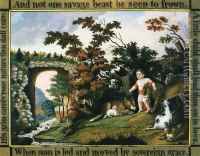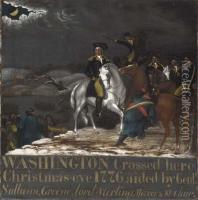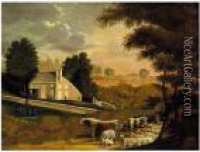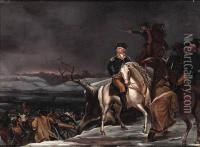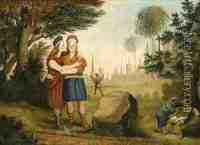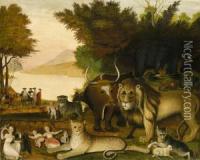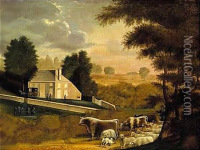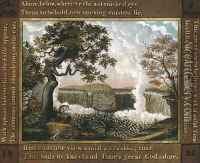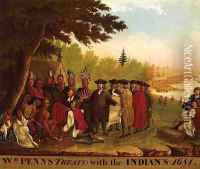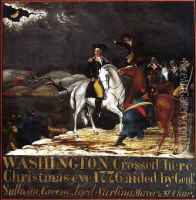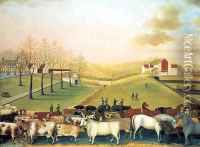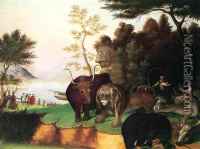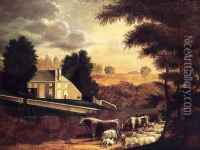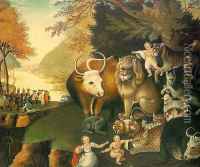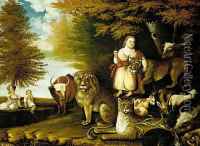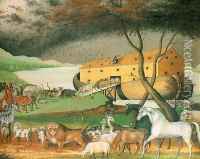Edward Hicks Paintings
Edward Hicks was an American folk painter and distinguished minister from the Religious Society of Friends, more commonly known as Quakers. Born on April 4, 1780, in Attleboro, Pennsylvania, Hicks became an iconic figure in American art history, most renowned for his work 'The Peaceable Kingdom', which depicts a menagerie of animals symbolically living together in harmony, reflecting his religious beliefs and the Quaker ideal of a peaceable kingdom.
Hicks began his life in humble circumstances. After his mother's death when he was just 18 months old, he was raised by a Quaker family named Twining. He apprenticed as a coach painter, which provided him with the skills that later influenced his career as a painter. His religious life was central to his identity, and he became a Quaker preacher in 1811. Despite the Quaker's disapproval of painting as a pursuit, Hicks found a way to reconcile his vocation with his faith, arguing that his work was a form of religious instruction.
Throughout his life, Hicks struggled with the tension between his art and his faith, as well as with financial instability. He painted over 100 versions of 'The Peaceable Kingdom', each varying slightly but all sharing the same theme of earthly peace and divine order. His other works also often contained religious symbolism and themes of unity and peace. Despite not being formally trained in art, his work is characterized by a simplistic yet powerful style that resonates with the themes of Quakerism and American folk tradition.
Edward Hicks died on August 23, 1849, in Newtown, Pennsylvania. His legacy is that of a man who blended his artistic vision with his spiritual convictions, leaving behind a body of work that continues to be celebrated for its unique contribution to American folk art and its representation of early American religious and cultural ideals.
